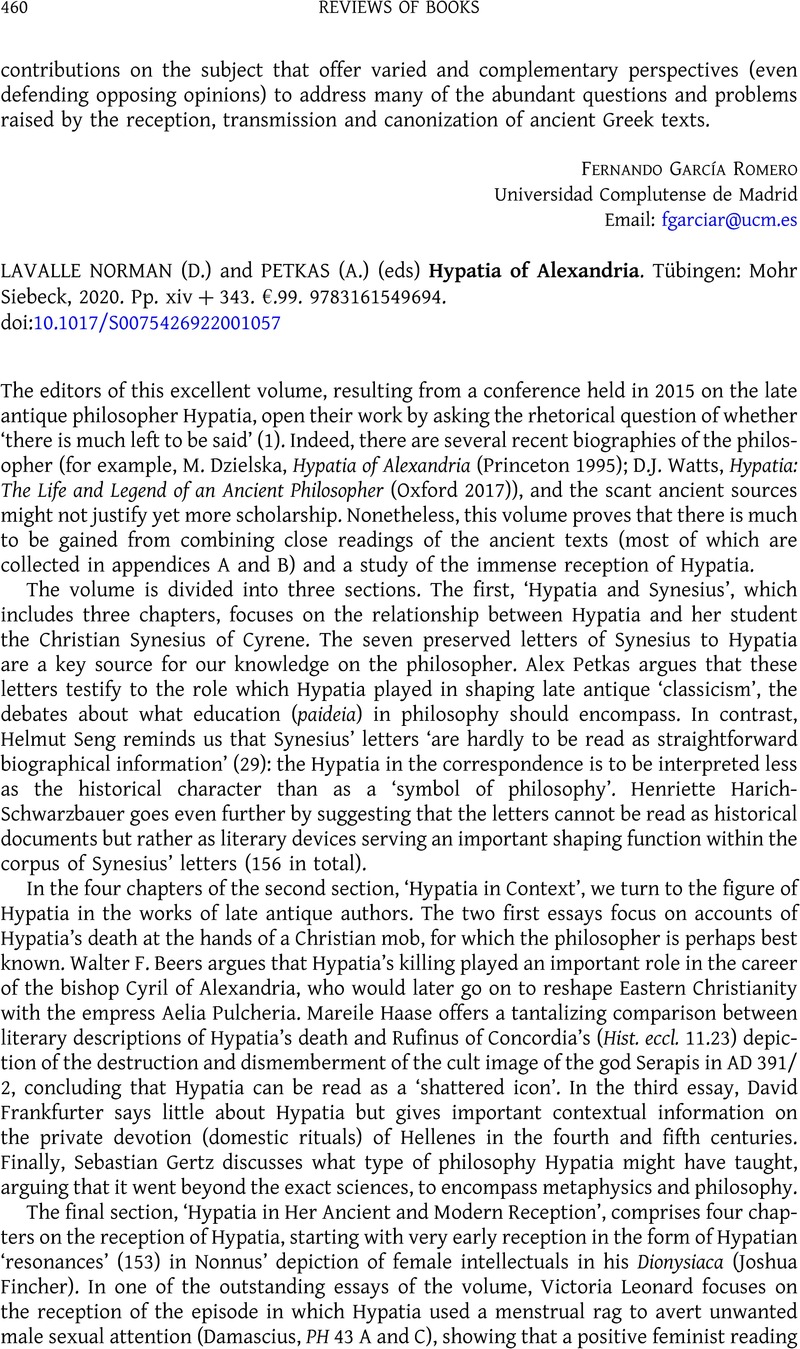No CrossRef data available.
Article contents
(D.) LAVALLE NORMAN and (A.) PETKAS (eds) Hypatia of Alexandria. Tübingen: Mohr Siebeck, 2020. Pp. xiv + 343. €.99. 9783161549694.
Review products
(D.) LAVALLE NORMAN and (A.) PETKAS (eds) Hypatia of Alexandria. Tübingen: Mohr Siebeck, 2020. Pp. xiv + 343. €.99. 9783161549694.
Part of:
Reception and history of scholarship
Published online by Cambridge University Press: 11 April 2023
Abstract
An abstract is not available for this content so a preview has been provided. Please use the Get access link above for information on how to access this content.

- Type
- Reviews of Books: Reception & History of Scholarship
- Information
- Copyright
- © The Author(s), 2023. Published by Cambridge University Press on behalf of the Society for the Promotion of Hellenic Studies


